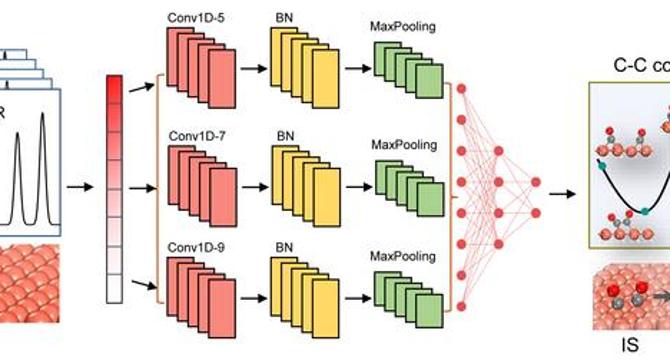Bioengineer
1w
162

Image Credit: Bioengineer
Unveiling Atomic Structural Changes in Chemical Evolution Through Machine-Learned Infrared Spectroscopy
- Machine learning and spectroscopy have been integrated to monitor and predict molecular transformations during catalytic reactions.
- Infrared spectroscopy has been used to detect molecular structures, but translating this into atomic-level dynamics during catalytic processes has been a challenge.
- The researchers integrated machine learning techniques with infrared spectroscopic data, creating a framework that maps spectroscopic fingerprints to detailed atomic structures.
- The researchers examined the interaction of two adjacent carbon monoxide (CO) intermediates as a model reaction to track the evolution of local atomic configurations.
- The machine learning model accurately characterized the structural rearrangements that take place during catalytic reactions in real-time.
- The study also revealed critical molecular configurations and energy barriers and identified the influence of metal dopants on enhancing CO–CO dimerization, aligning with established experimental data.
- This research showcases the immense potential of artificial intelligence and machine learning in understanding complex chemical processes.
- It highlights the importance of incorporating both computational and experimental methodologies to refine models further and glean insights that were previously unattainable.
- The collaborative nature of the research exemplifies how cross-disciplinary collaborations can lead to groundbreaking advancements.
- Overall, the study represents a monumental step forward in utilizing machine learning for monitoring catalytic reactions.
Read Full Article
9 Likes
For uninterrupted reading, download the app